These highlights chronicle the year 2010. Created
incrementally as new photos were available, the year runs generally
"backwards" on this page. The abbreviation "MTY" means "Monterey County"
in the text below. Text by Don Roberson. Photos on this page
are copyrighted by the photographers to whom they are
attributed, and may not be reproduced in any form (including
other web sites) without the express consent of the photographer.
|
|
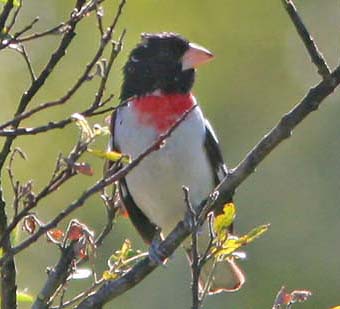
We always get a few 'eastern' vagrants in MTY in late May. This year a male Indigo Bunting
frequented the campground at Andrew Molera SP over the final two weeks
of the month, and attracted many birders (photo above © Blake T.
Matheson). On 31 May, Chris Hartzell reported it was apparently paired
with a female Lazuli Bunting with an active nest.
At least five different Rose-breasted Grosbeaks
were present over this period, including this singing male at Big Sur
R. mouth 29 May (© D. Roberson) . In Pacific Grove a male
Rose-breasted was counter-singing with a male Black-headed for several
days, and both had females in tow. Photos of the P.G. grosbeak and more
on the Big Sur Indigo are on Bill Hill's web site.
Also in Pacific Grove, a male Olive-sided Flycatcher
appeared on territory on 24 April and had attracted a mate by late May.
This is the same territory where a pair fledged 3 young last summer,
the first proven nesting in Pacific Grove. I presume it is the same
male returning Olive-sided below was at Big Sur R. mouth 29 May]. |
|
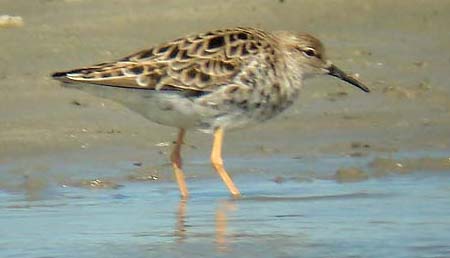 An excellent spring wader was this female Ruff
in partial alternate plumage at a restricted area near Salinas. Found
by Kent Van Vuren on 22 May, it was still present the next day for this
digiscoped shot (left © D. Roberson). An excellent spring wader was this female Ruff
in partial alternate plumage at a restricted area near Salinas. Found
by Kent Van Vuren on 22 May, it was still present the next day for this
digiscoped shot (left © D. Roberson).
At the time of the publication of Monterey Birds,
2d ed. (2002) there were no records of spring migrants in MTY, but the
author opined that one "seems likely to occur in a future spring
migration." |
 Sometimes even the most common resident species can be surprising. That surely was the case this May with this singing Spotted Towhee
on territory along the Rocky Ridge trail in Garrapata SP. The wings,
tail, flanks and legs look very typical, but for some reason this bird
confused some — it was even reported as a 'possible Snow Bunting' — and
entertained many on this oft-used (but steep) hiking route. Sometimes even the most common resident species can be surprising. That surely was the case this May with this singing Spotted Towhee
on territory along the Rocky Ridge trail in Garrapata SP. The wings,
tail, flanks and legs look very typical, but for some reason this bird
confused some — it was even reported as a 'possible Snow Bunting' — and
entertained many on this oft-used (but steep) hiking route.
Perhaps this photo will help explain what the fuss was all about (photo 15 May © Paul Keel). |
|
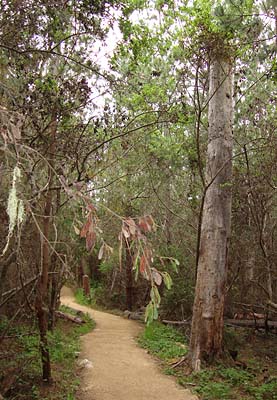 |
For
the second year in a row, Pt. Lobos has hosted a very interesting owl
along one of its quiet paths (left). Last March it was Long-eared Owl at a day roost; this May it was an active nest of Northern Saw-whet Owl
(left & right, above & below). Stan Dryden was the first to
report this observation; the nest had two juvenal-plumaged owls on my
visit (these photos, 15 May).
Although
fledgling Saw-whets have previously been found at Hastings Reserve,
Pfieffer-Big Sur SP, A. Molera SP, and China Camp, no actual nests have
been reported in the published MTY literature (Roberson & Tenney
1993). So this is the first actual nest located in our county. In
published studies of nest boxes in San Mateo Co., Saw-whets laid eggs
in April, hatched young in early May, and fledged the youngsters in
early June (Granfield 1937, Santee & Granfield 1939). Some fledge
in early May in nearby Santa Cruz Co. (fide David Suddjian). |
|
|
|
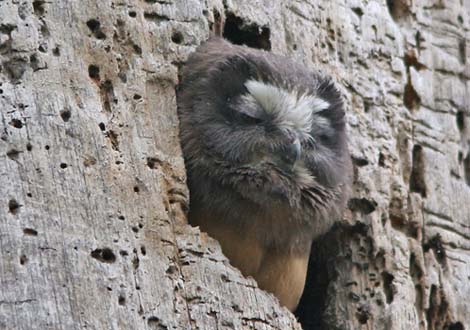 Blake
Matheson & I visited the site at mid-afternoon. While the owls were
hidden inside the nest hole a fair bit of the time, they were very
precocious and curious when looking out at the world. One of them
couldn't quite figure out what I was, and turned his head upside down
to get a better view (above right). When it finally figured me out, it
gave what can only be called a "bitter beer face" (left). Blake
Matheson & I visited the site at mid-afternoon. While the owls were
hidden inside the nest hole a fair bit of the time, they were very
precocious and curious when looking out at the world. One of them
couldn't quite figure out what I was, and turned his head upside down
to get a better view (above right). When it finally figured me out, it
gave what can only be called a "bitter beer face" (left).
We
stood very quietly at all times, and made no effort to annoy the young
owls. I would hope that all other visitors would use good birding
ethics, and don't touch the tree nor try to entice (bother) the owls
with calls or tapes. They've got enough problems figuring out the world
as it is . . . |
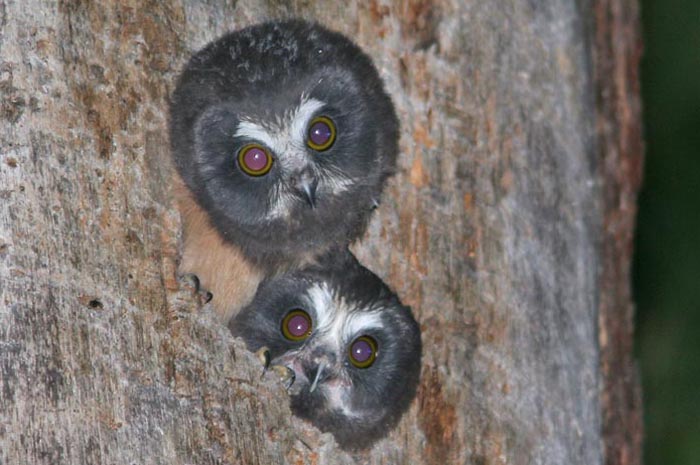 UPDATE:
the two youngsters fledged on 20 May, and were seen sitting at a day
roost not far from the nest for a day or two thereafter. Photos of the
fledged owls are on Bill Hill's website. UPDATE:
the two youngsters fledged on 20 May, and were seen sitting at a day
roost not far from the nest for a day or two thereafter. Photos of the
fledged owls are on Bill Hill's website.
During
the short time they were in the nest and known to the public, a good
many visitors enjoyed their presence. A fine 2-minute video by Marcel
Holyoak is posted to YouTube.
This photo (right) was with flash right at dusk on 16 May (© D. Roberson). The adult male could be heard calling nearby. |
|
| The highlight of the 8 May Monterey Seabirds pelagic trip was this Laysan Albatross
~3.25 nmi off Cypress Pt. (above © D. Roberson). The trip also
recorded 120 Black-footed Albatross and huge flocks of phalaropes,
estimated at 20,000 Red-neckeds (all in breeding plumage) and 2,000
Reds (in a wide mixture of plumages). Almost all the Red-necks were in
flocks within a narrow band 1-7 nmi offshore, while the Reds were
mostly sitting on the sea in a convergence zone 13-15 nmi offshore. |
| The Monterey Audubon Birdathon 30 Apr–1 May recorded 232 bird species, including a rare (possibly nesting) pair of Lewis's Woodpecker (right). Full details elsewhere on this web site. |
|
|
| Spring shorebird migration brought only a few rarities this year, including a first-spring (presumably) American Golden-Plover
near Salinas 18-19 April (below left; found by Kent Van Vuren 18 Apr,
digiscope © D. Roberson 19 Apr). A duck of interest at the same
locale in April was a male Blue-winged X Cinnamon Teal hybrid (below right; © D. Roberson — with male Cinnamon in this digiscoped shot). |
|
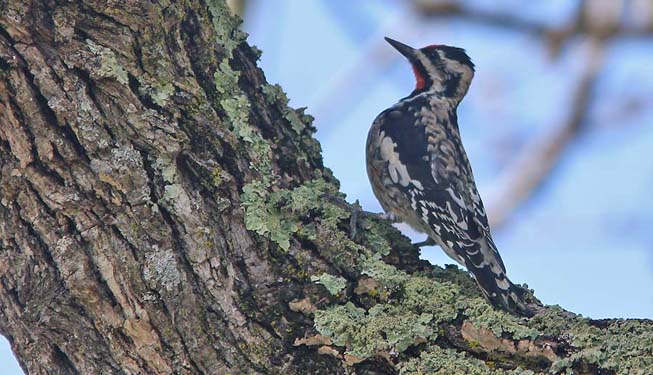
An unexpected bonus for Brian Sullivan while buying a house in Carmel Valley in March was the discovery of two young male Yellow-bellied Sapsuckers in the back yard at random times. This one was still present 13 Mar (© D. Roberson). |
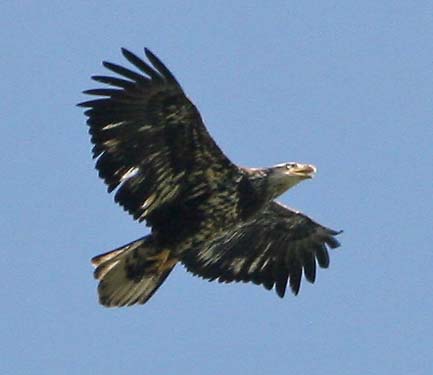 |
Bald Eagle has been restored as a regular part of the breeding avifauna of southern MTY, thanks to the work of Ventana Wildlife Society
in the 1980s-1990s. Fair numbers also arrive in late fall to winter
around Lake San Antonio. Still, it is always a treat to see one, and I
was particularly pleased to photograph this subadult in an interesting
transitional plumage on 13 Feb (© D. Roberson). It was soaring
over Highway 101 just north of Camp Roberts.
Hooded
Merganser is remarkably scarce in MTY, so the three that lingered at
Elkhorn Slough Nat'l Estuarine Research Reserve this winter were very
welcome (photo below 31 Jan © Marcus Rangel).
|
|
|
| A fine wintering rarity was this Black-headed Grosbeak
at the home of Laura Rodriguez & Betty Cost in Royal Oaks in north
MTY. It arrived in mid-December and was still present into February
(this photo 2 Feb © Betty Cost). I am less certain about age and
sex, but I think it may be a first-winter male in formative plumage, in
part because of the extent of white visible at the base of the
primaries (see Pyle 1997). |
|
|
In
January, MTY was battered by a drenching storms that brought rain, some
lightning, and huge rolling surf. Despite the elements, the Tropical Kingbird
at Pt. Pinos, which arrived mid-December, continued to flycatch around
Crespi Pond into March (right © D. Roberson, taken 29 Jan).
Between storms, three different Cook's Petrel
were seen from Pt. Pinos in mid-January (Brian Sullivan, Don Roberson).
The rains are being attributed to El Niño conditions in the
equatorial Pacific; perhaps the Cook's are responding as well? |
|
Another rare bird at Pt. Pinos was this Common Raven
flying by on 6 Feb (right © Brian L. Sullivan). It is only the
third raven ever reliably reported from the Point. Ravens continue to
increase throughout coastal MTY.
Common Raven is decided uncommon at Pt. Pinos, and so is Common Merganser,
but Brian Sullivan also photographed these two (below) on 6 Feb;
possibly a first-winter male and a female. This is just the 4th time
ever this duck has been seen at the Point. |
|
|
|
|
 The
drenching rains gave hope that our long local drought might end, while
the usually dry hills in the interior were soon alive with new green
grass (view of Peachtree Valley with San Lorenzo River, from Lonoak Rd 30 Jan © D. Roberson). The
drenching rains gave hope that our long local drought might end, while
the usually dry hills in the interior were soon alive with new green
grass (view of Peachtree Valley with San Lorenzo River, from Lonoak Rd 30 Jan © D. Roberson).
On 30 January, Peachtree Valley hosted 110 Mountain Bluebirds,
but numbers had declined to about half that amount by 13 February, when
the field hosting the bluebirds, and a couple of bluebirds, were
photographed (© D. Roberson). Others were scattered elsewhere in
southern MTY.
Along Lonoak Road east of King City that day, a pair of seldom-seen Greater Roadrunner hunted the new growth: female (just below) and male (below that; note red 'cockade' and erectile crest © D. Roberson).
|
|
|
Literature cited:
- Granfield, W.M. 1937. Nesting of the Saw-whet Owl. Condor 39: 185–187.
- Roberson,
D., and C. Tenney. 1993. Atlas of the Breeding Birds of Monterey
County, California. Monterey Pen. Audubon Soc., Carmel.
- Santee, R., and W.M. Granfield. 1939. Behavior of the Saw-whet Owl on its nesting grounds. Condor 41: 3–9.
|
| |
|
TOP
GO TO
HOME PAGE
TO MONTEREY
COUNTY
PAGE
TO BIRD
FAMILIES
OF THE WORLD
|


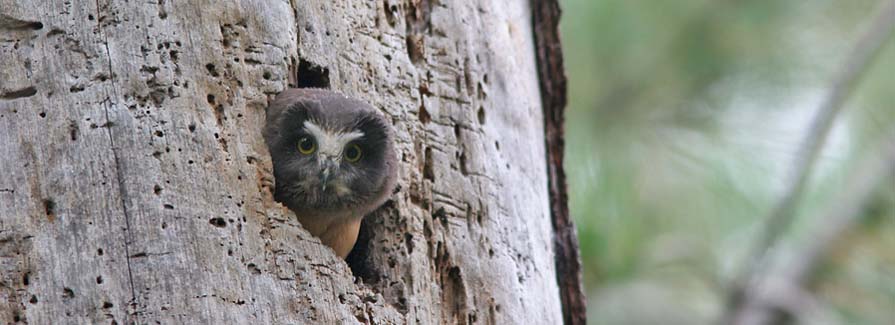


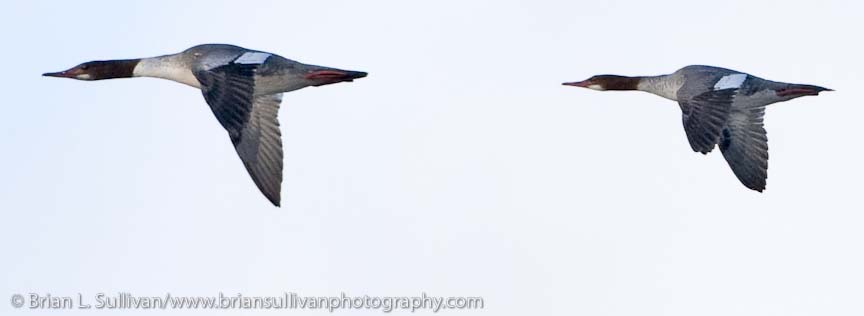

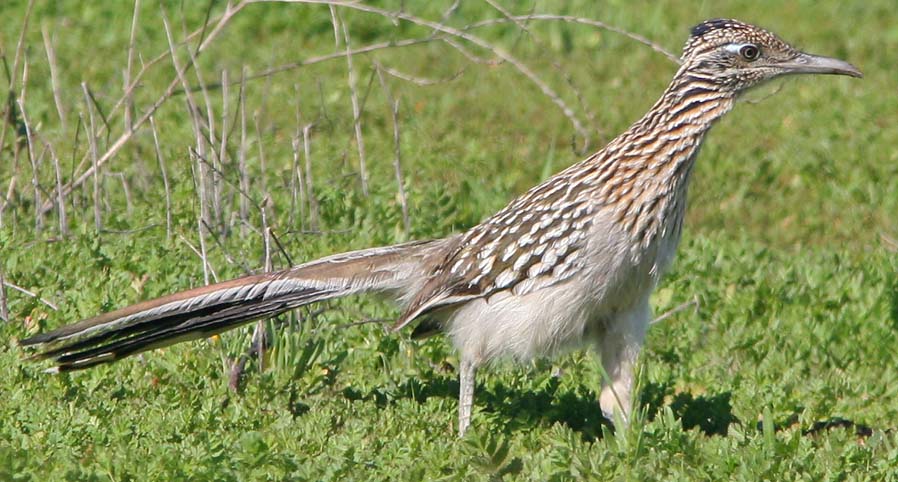
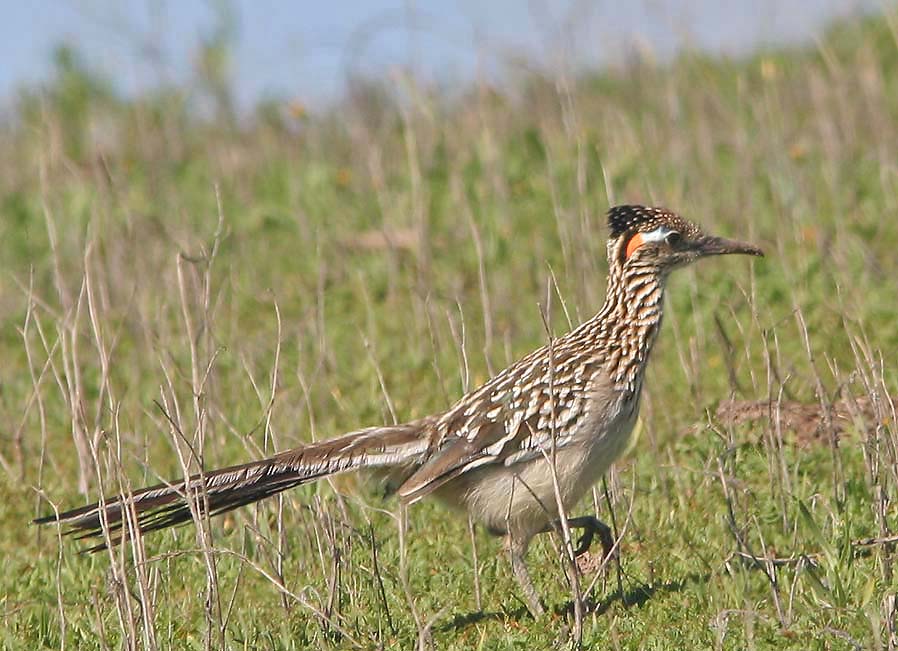

 An excellent spring wader was this female Ruff
in partial alternate plumage at a restricted area near Salinas. Found
by Kent Van Vuren on 22 May, it was still present the next day for this
digiscoped shot (left © D. Roberson).
An excellent spring wader was this female Ruff
in partial alternate plumage at a restricted area near Salinas. Found
by Kent Van Vuren on 22 May, it was still present the next day for this
digiscoped shot (left © D. Roberson).  Sometimes even the most common resident species can be surprising. That surely was the case this May with this singing Spotted Towhee
on territory along the Rocky Ridge trail in Garrapata SP. The wings,
tail, flanks and legs look very typical, but for some reason this bird
confused some — it was even reported as a 'possible Snow Bunting' — and
entertained many on this oft-used (but steep) hiking route.
Sometimes even the most common resident species can be surprising. That surely was the case this May with this singing Spotted Towhee
on territory along the Rocky Ridge trail in Garrapata SP. The wings,
tail, flanks and legs look very typical, but for some reason this bird
confused some — it was even reported as a 'possible Snow Bunting' — and
entertained many on this oft-used (but steep) hiking route. 
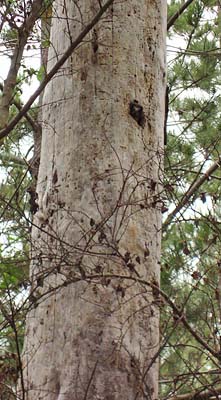
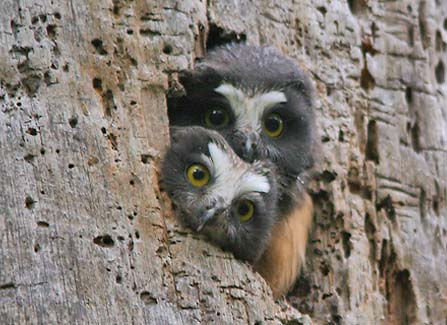
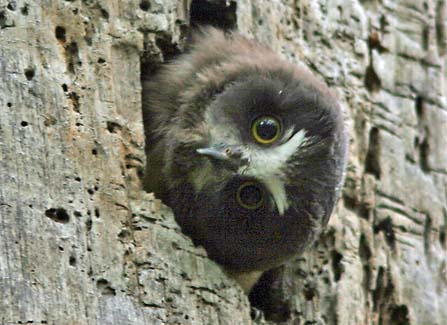
 Blake
Matheson & I visited the site at mid-afternoon. While the owls were
hidden inside the nest hole a fair bit of the time, they were very
precocious and curious when looking out at the world. One of them
couldn't quite figure out what I was, and turned his head upside down
to get a better view (above right). When it finally figured me out, it
gave what can only be called a "bitter beer face" (left).
Blake
Matheson & I visited the site at mid-afternoon. While the owls were
hidden inside the nest hole a fair bit of the time, they were very
precocious and curious when looking out at the world. One of them
couldn't quite figure out what I was, and turned his head upside down
to get a better view (above right). When it finally figured me out, it
gave what can only be called a "bitter beer face" (left). UPDATE:
the two youngsters fledged on 20 May, and were seen sitting at a day
roost not far from the nest for a day or two thereafter. Photos of the
fledged owls are on
UPDATE:
the two youngsters fledged on 20 May, and were seen sitting at a day
roost not far from the nest for a day or two thereafter. Photos of the
fledged owls are on 
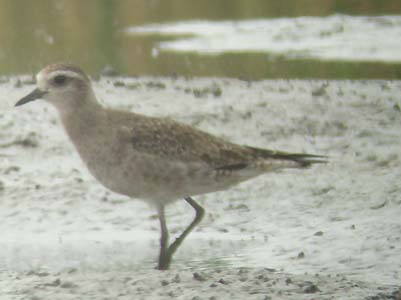
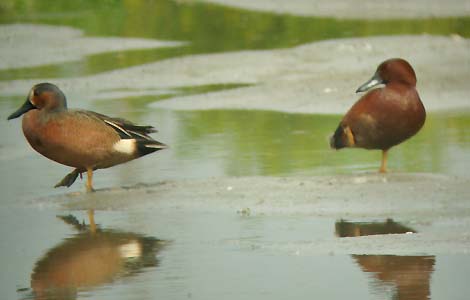


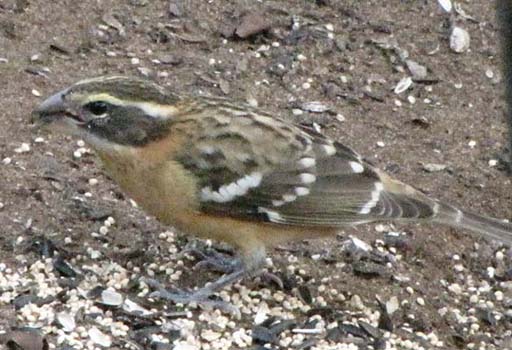
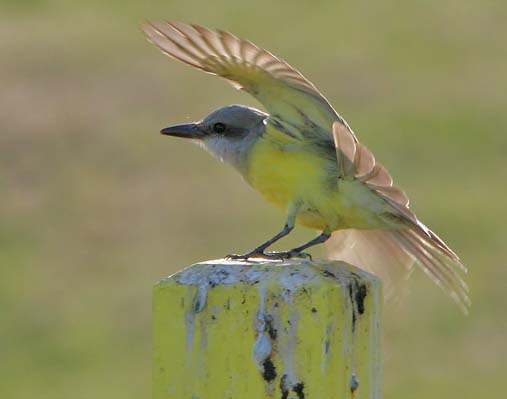
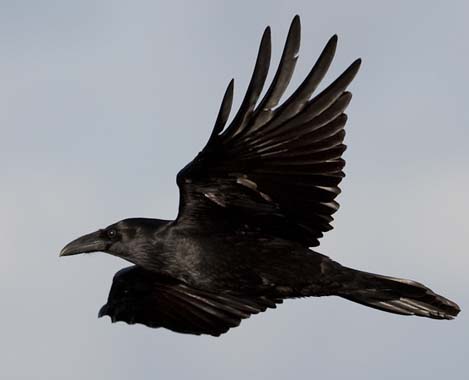
 The
drenching rains gave hope that our long local drought might end, while
the usually dry hills in the interior were soon alive with new green
grass (view of Peachtree Valley with San Lorenzo River, from Lonoak Rd 30 Jan © D. Roberson).
The
drenching rains gave hope that our long local drought might end, while
the usually dry hills in the interior were soon alive with new green
grass (view of Peachtree Valley with San Lorenzo River, from Lonoak Rd 30 Jan © D. Roberson).